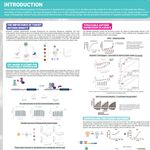Professor for Medical Education and Medicine, Charité - Universitätsmedizin, Berlin, Germany
BIOGRAPHY
CET
Interprofessional working: Who does what, barriers & facilitators to IP working, road map for IP working
Presented at:
EFIC Virtual Pain Education Summit
Speakers
Abstract
Chair: Harm Peters, Germany
Interprofessional working in pain management
Emma Briggs, United Kingdom
Emma Briggs, United Kingdom
Shared decision making and learning in an interprofessional context
Brian McGuire, Ireland
This talk will describe the challenges and rewards associated with building an interprofessional pain management team within the context of scarce resources. Undoubtedly such teams achieve better clinical outcomes and patients generally prefer them to unidisciplinary approaches – data will be presented from the author’s pain management service to exemplify these points. But there are challenges too –finding a shared language for the team, learning to talk to patients using that shared language, learning to appreciate the approach taken by other disciplines, communicating effectively even when not in the same service or setting, keeping momentum and persevering in the absence of resources.
Building an interprofessional team
Paul Wilkinson, United Kingdom
Paul Wilkinson, United Kingdom
We often talk about (professional) disciplines derived from the term disciple. Arguably, disciples occupy both physical and intellectual spaces fiercely guard those spaces and meet those who intrude with suspicion! Alas, this may not need lead to the best education or clinical care for patients with pain. In this presentation, the value of pain teams is considered starting with often confusing terminology. Referencing multi-professional teams for Pain Management Programmes as a case study, he discusses how teams can be assembled using National Guidance to provide the best care and discusses the internal structure and process as well as the normalising contextual frameworks in which they operate. He uses simple group theory as a framework to discuss team development and the problems that can occur. Team set-up and transformation with time for the better is a subtle reflective educational process with focus on what works well and what may not.
Q&A
You May Also Like
FEB 25, 2025 | 1:00 PM
C.E. CREDITS
Quality efforts in the clinical laboratory are always under the microscope- a hyper-focus for laboratorians from start to finish. Recognizing the external factors that affect hemostasis test...
Join this year's poster presenters in the Poster Hall during the Poster Networking Hour, Wednesday, September 20th, from 10:00 AM –11:00 AM PDT , to chat live about their posters a...
Join this year's poster presenters in the Poster Hall during the Poster Networking Hour, Wednesday, March 5th, from 10:00 –11:00 AM PDT , to chat...
Loading Comments...







